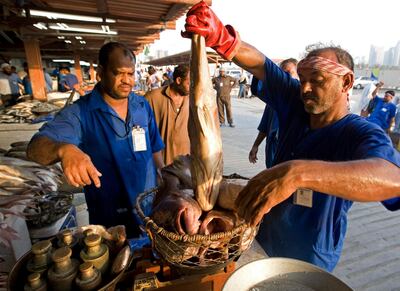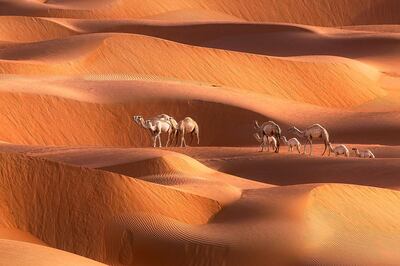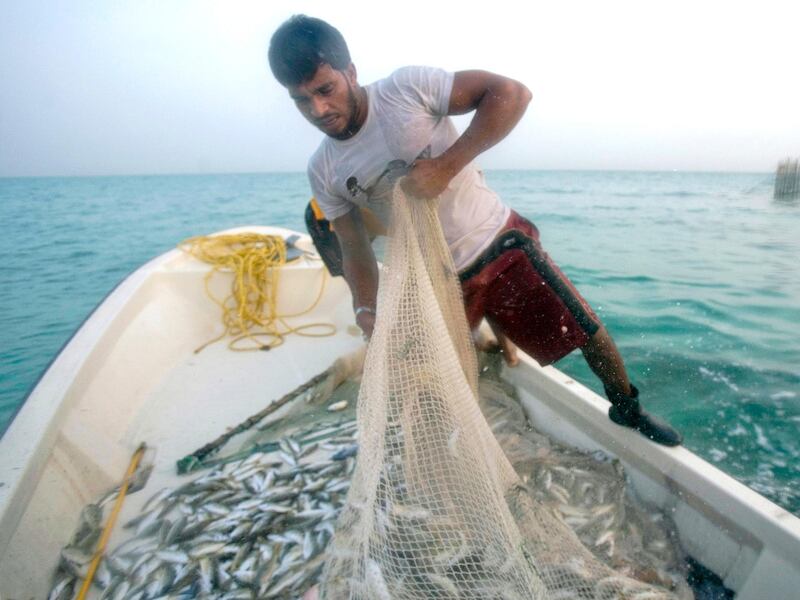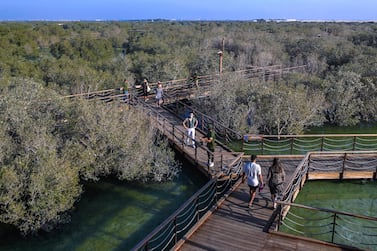Many years ago, while researching into the archaeology of Abu Dhabi, I encountered a local fisherman who lived a spartan life with his wife on the island of Marawah, in western Abu Dhabi. They felt very much at home there, coming only rarely to their house in the city.
Though we struggled with language – his English was non-existent and my Arabic very poor – Darwish and I became friends.
Born well before the Second World War, he had tales in profusion of the pre-oil past. He remembered the days when fresh water used to be brought from Kuwait in wooden casks towed behind dhows. A resident of the island of Balghelam, in north-east Abu Dhabi, before moving to Marawah, he knew almost every island well. He knew where the old settlements had been and how they were used, something of enormous value to archaeologists as we struggled to understand the sketchy remains that were still visible. He could explain how people moved from the islands onshore and inland at various times of the year.
Darwish knew the sea too. It was his life. He knew the tides and the pearl banks. He knew the crevices in coral reefs where the big hamour would hide and told tales of how he could go wading at low tide, put a hand into the crevices and pull out a big fish. Such knowledge, I suspect, is now largely forgotten.
More than 20 years ago, I wrote a profile of Darwish in Emirates News talking about his knowledge of a passing era. I remember the headline clearly, one of his favourite phrases: "Al Bahr Kulu Kharrab", a pidgin Arabic of the phrase "The Sea is All Ruined".
Darwish lamented the over-fishing that was already depleting our marine resources. The large hamour of the past, he told me, were increasingly difficult to find. Other species were also rapidly declining. Metal gargour fishing traps, lost on the seabed, were catching fish that would never be brought to market, a phenomenon known as "ghost fishing".
Unless something drastic was done, he predicted, our fish stocks would collapse irreversibly and a way of life that had lasted for thousands of years would be gone.
He was an early harbinger of doom. Although the use of the gargour is now tightly controlled and regulations have been introduced to the fishing industry, a study by the Environment Agency Abu Dhabi published last year showed that stocks of popular species such as hamour and sheri have declined by over 85 per cent.

I thought of Darwish this week as I read of the success of a fish-breeding project in Umm Al Quwain, run by the Ministry of Climate Change and the Environment in association with the local Department of Economic Development and the UAQ fishermen's co-operative. This project, along with another one on the island of Abu Al Abyad, now produce around 35 million young fish a year, of hamour, sheri and other species, to be released into the waters of the Gulf.
At last, dedicated efforts are being made to reverse the decline in stocks that Darwish saw so clearly nearly a quarter of a century ago. I hope that it is not too late.
Over-exploitation of our natural resources is not confined to the sea, of course. Onshore, in the deserts, the numbers of camels have grown to such an extent that the natural vegetation is being eliminated. According to the Food and Agriculture Organisation, the numbers of UAE camels increased from 39,500 in 1976 to 436,800 in 2016. Numbers in Abu Dhabi, according to Statistics Centre – Abu Dhabi, rose by 42 per cent between 2005 and 2018 alone, to 405,160. Grazing areas in Abu Dhabi have 85 per cent less vegetation than the areas that are fenced and ungrazed.

While similar studies haven’t been undertaken in the mountains, the rapid expansion of herds of sheep and goats mean that plants and shrubs have less chance to regenerate. Barren hillsides predominate where once sturdy trees could be found. A study a few years ago of wild olive trees – found only in a restricted area south of Fujairah – showed that virtually no young trees were present. They had been grazed before they could become established.
As the vegetation disappears, so too do the various forms of wildlife that depend on it.
The establishment of protected areas, whether on land or at sea, is a positive and much welcome step, as are the breeding programmes for hamour and other fish. That, though, can only ever be part of the solution if we are to halt the damage that has already been done and to reverse the downward trend.
The numbers of camels, sheep and goats need to be drastically reduced. More of our demand for fresh fish needs to be met from fish farms, so that both inshore and deep sea fishing can be dramatically curtailed.
My friend Darwish, and many others like him, sounded the alarm long ago. It is good to see decisive action taken to act on the warnings they so passionately gave.
Peter Hellyer is a UAE cultural historian and columnist for The National






